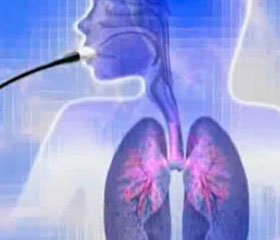Журнал «Здоровье ребенка» 2 (61) 2015
Вернуться к номеру
Type of airway inflammation in schoolage children with severe asthma phenotype.
Авторы: Ye.P. Ortemenka — (prof. assistant of Department of Pediatrics and pediatric infectious diseases)
The Department of Pediatrics and pediatric infectious diseases, Bukovinian State Medical University, Chernivtsi, Ukraine
Рубрики: Педиатрия/Неонатология
Разделы: Клинические исследования
Версия для печати
An inadequate control of bronchial asthma (BA) is often associated with a severe, resistant to standard basic therapy, phenotype of disease. Risk factors of severe asthma include some triggers action (smoking, exposure of allergens or pollutants, viral infection, stress), as well as a lack of compliance or the presence of concomitant diseases. While, it is believed that the severe asthma phenotype caused by genetic determinism of the individual insensitivity to corticosteroids phenomenon. At the same time, heterogeneity of the airways inflammation (eosinophilic, noneosinophilic, paucigranulicytic) is one of the aspects of inadequate asthma control. Published data regarding the association of the asthma severity with a variant of the chronic airway inflammatory response remains controversial and, at the same time, not studied enough in children population.
The aim. To study the particularities of the bronchial inflammation in school-age children with severe asthma.
Materials and methods. In pulmonology department of the Chernovtsy Regional Children Clinical Hospital 43 school age children with persistent BA have been examined. A cytological analysis of induced sputum obtained by inhalation of serial dilutions of hypertonic solutions (3%, 5%, 7%) of sodium chloride has been performed to all children by the method of Pavord I.D. in modification of Pizzichini M.M. (1996). The first (I) clinical group has been formed from 24 children with severe asthma phenotype. The second (II) clinical group included the remaining 19 patients with moderate BA. The comparison groups did not differ significantly on the main (sex, age, place of residence) clinical characteristics. These survey results were analyzed by parametric (Pt, Students’ criteria) and nonparametric (Pu, Mann-Whitney U test; Pφ, Fisher's angular transformation) methods of calculation.
Results. The cellular composition of the induced sputum of children with severe asthma was: 7,3±1,4% of eosinophilic granulocytes, 51,0±3,9% of neutrophilic granulocytes, 33,0±4,9% of alveolar macrophages, 10,9±2,9% of lymphocytes. In the cytological profile of bronchial secretions of patients of II-nd group there have been included, respectively: 4,1±1,8% of eosinophils (Рu<0,01), 56,0±6,7% of neutrophils (Рt=0,05), 28,2±6,4% of macrophages (Pt>0,05), 11,2±3,7% of lymphocytes (Pt>0,05).
In patients with severe asthma expressive hypereosinophilic response of airways has been observed. Thus, a significant eosinophilia of bronchial secretions (number of eosinophilic granulocytes ≥12% in induced sputum) was determined only in 10,5% of cases in the II-nd group, however, was recorded in every third patient (29,2%) with severe asthma phenotype (Pφ<0,05).
Despite numerous literature reports on the association of severe asthma phenotype in adult patients with neutrophilic type of airway inflammation, significant relative neutrophilia of bronchial secretions has been determined more often in children with moderate bronchial asthma. Thus, significant amount (>80%) of neutrophilic leucocytes in induced sputum has been registered in every forth (26,3%) patients with moderate asthma, but only in 8,3% cases in the I-st group of observation (Рφ<0,05).
It should be noted that among the patients in both clinical groups an intensive lymphocytic inflammatory response of airways has been observed. Namely, the relative content of lymphocytes in induced sputum was three times higher than the normal regional rate (3,1±0,6%) in children with severe asthma (10,9±2,9%; Pt<0,05) as well as in patients with moderate course of the disease (11,2±3,7; Pt<0,05). At the same time, a relatively moderate lymphocytosis of airways (lymphocyte counts in sputum ≥11%) has been observed in every fourth (25,0%) patients with severe asthma phenotype.
Severe asthma phenotype has been associated with significant damage to bronchial epithelium that has been expressed by increased number of desquamated epithelial cell in cellular sediment of the induced sputum. Thus, the number of cylindrical epithelial cells in bronchial secretion ≥50% was recorded in every third (29,3%) patients with severe asthma, and only in a quarter (26,3%) of patients of the II-nd comparison group (Pφ> 0,05).
Conclusions. It has been observed that severe asthma phenotype in school-age children characterized by mixed (hypereosinophilic response with moderate lymphocytic reaction) type of chronic airways inflammation, associated with expressive damage of bronchial epithelial layer. Such changes, in our opinion, require a combination of high-dose inhaled corticosteroids with anti-inflammatory drugs, action which is aimed at the additional suppression of the eosinophil-mediated inflammatory response (IgE blockers, leukotriene modifiers, chromones).

